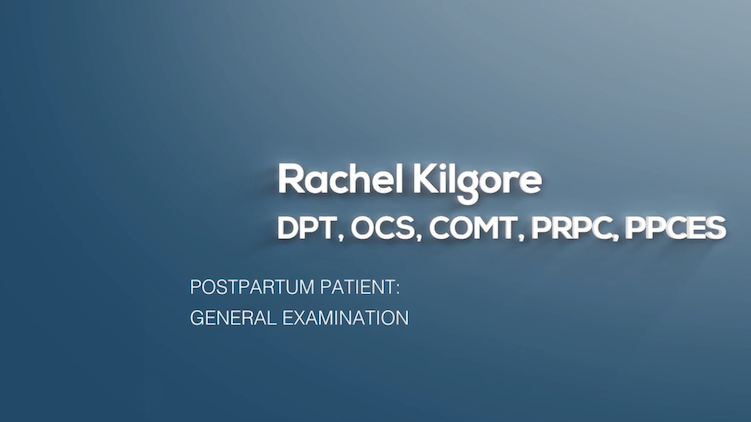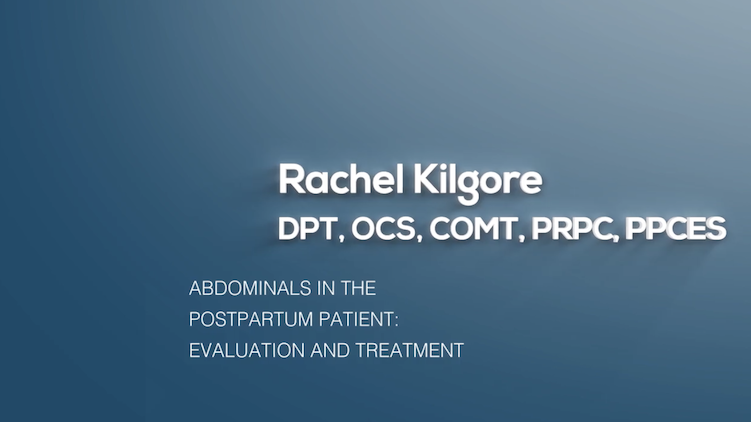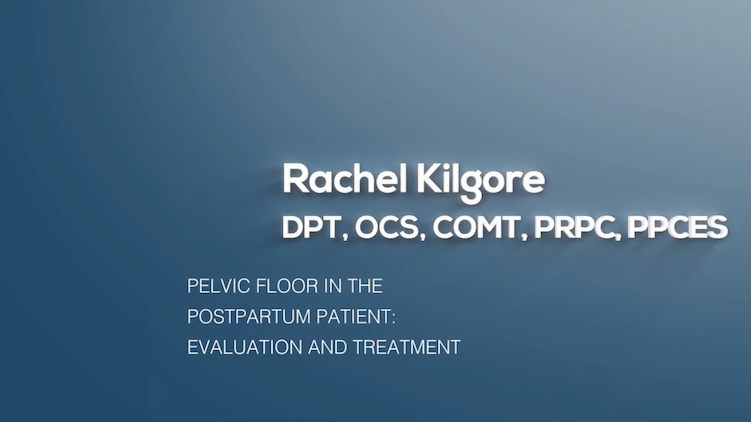
This week The Pelvic Rehab Report sat down with faculty member Ken McGee, PT, DPT. Ken (they/he) is a queer transmasculine pelvic health physical therapist based in Seattle whose mission is to bring greater awareness to the pelvic health needs of the LGBTQIA2S community. Their practice, B3 Physical Therapy, centers on transgender and perinatal rehabilitation. Ken also provides peer bodyfeeding support and doula care, and can be found on Instagram at @b3ptcob3ptco.
You can join Ken in their remote course, Perinatal Mental Health: The Role of the Pelvic Rehab Therapist, scheduled for October 22, 2022.
Who are you? Describe your clinical practice.
Experiencing inadequate care for my own pelvic health conditions as a teenager motivated me to become a pelvic health physical therapist. Being a member of the queer community further drove me to offer trauma-informed care and develop better access to care through home visits. Currently, I split my time between providing gender-affirming physical therapy and serving as a birth doula.
What lesson have you learned (in a course, from an instructor, or from a colleague or mentor) that has stayed with you?
Very few clients will remember detailed biomechanical explanations or every exercise you teach them. However, each client will remember how you treated them and how you made them feel. Asking clients about their preferences for care and following up go a long way in establishing rapport.
What do you find is the most useful resource for your practice?
One of my favorite resources is Decolonizing Fitness. It is an educational platform by Ilya Parker, PTA, (he/they). It provides a catalog of exercises and trainings for people looking to improve their care of gender-diverse people and People of Global Majority.
What books or articles have impacted you as a clinician?
The healthcare field regularly puts people in boxes to determine care. For example, many providers might determine care based on whether someone is a transgender woman or man. However, gender is actually someone’s individual experience rather than a category. Kate Bornstein’s My New Gender Workbook is a good starting point for understanding gender as uniquely one’s own, rather than part of a treatment algorithm.
What made you want to create this course, Perinatal Mental Health?
I wanted to create this course because, as a parent and physical therapist, I see both the challenges that the perinatal period presents, as well as the ways that rehabilitation providers can support mental health. In developing the content, I drew upon my background as a volunteer for a perinatal mental health warm line.
What need does your course fill in the field of pelvic rehabilitation?
Pelvic rehabilitation providers regularly interact with people who have mental health challenges. However, there are very few courses that specifically address the needs of the pelvic health providers serving folks in the perinatal period. This course looks at perinatal mental health from the perspective of pelvic rehabilitation providers, while offering specific actions providers can take to support their clients.
Who, what demographic, would benefit from your course?
Rehabilitation providers of any experience level would benefit from taking this course. Providers who are new parents or considering becoming pregnant may also find the content personally enriching. While the research discussed in this course focused on the perinatal period, much of it can be extrapolated to other populations.
What is your message to course participants who are just starting their journey?
For people just starting in pelvic rehabilitation, I would recommend focusing on patient education. For me, I find that the greatest amount of client improvement comes through reviewing the basics. It’s okay to still be developing skills in manual therapy.

Perinatal Mental Health: The Role of the Pelvic Rehab Therapist
Price: $150
Contact Hours: 5.75
Course Date: October 22, 2022
Description: This one-day remote course covers mental health considerations in pregnancy and postpartum and is targeted to the pelvic rehab clinician treating patients in the peripartum period. Topics include common mental health concerns in the postpartum period including depression, anxiety, OCD, and PTSD, as well as the connectedness between mental health and physical dysfunction. The course will introduce useful screening tools and how to connect patients to resources and diagnosing professionals. Labs will include partnered breakout sessions to practice listening and dialogue skills. The course also includes a review of coping techniques to support mental health and physical symptoms.

I have always enjoyed working with the peripartum population. However, the longer I worked in pelvic rehabilitation the more I heard the same story over and over when interviewing patients. For example, when working with a patient with urinary incontinence or prolapse, I would say: “when did this start” and some of my elderly patients would laugh and say “when Johnny was born” and I would say “how old is Johnny” they would reply “40!” Many of the pelvic patients I was treating had symptoms originating around the time of childbirth and they had been suffering for decades. So, I figured, let’s get to the root of the problem and focus on earlier intervention.

What is the root of the problem? In my opinion, it is the lack of postpartum care. Pregnant patients are often inundated with birth education programs and information about pregnancy and childbirth. Additionally, there is a battery of prenatal visits, prenatal testing, and preparations for birth. All of which are wonderful to help prepare for birth. Conversely, the resources and guidance to help with physiological and musculoskeletal healing postpartum are lacking. Patients are counseled about serious signs and symptoms, but clear guidance to help to return to daily functional activities including recreation and exercise is often not provided. As musculoskeletal and exercises experts we are in a wonderful position to help patients reduce pain and improve function following the birth of a child.
Prior to 2018, the first post-partum checkup was six weeks following birth. Barring any severe problems, this was often the last contact with a medical provider for the parent. Patients were not provided specific guidance on how to return to daily activities, let alone higher-level activities such as running, exercising, and/or lifting weights.
In 2018, the American College of Obstetrics and Gynecology (ACOG) revised its guidelines, which now support earlier and more frequent postpartum visits. It is recommended that the first contact between patient and obstetric care provider occur in the first three weeks following birth and that subsequent visits are scheduled as needed in an ongoing fashion1. This is important, as many consider the patient is still healing from birth up to 12 weeks (definitions vary). Depending on their knowledge and experience, a patient may not immediately realize they have a musculoskeletal problem. A new parent is busy adapting to their role as a care provider and may not be thinking about themselves. Additionally, they may not know what “normal” is for their body postpartum, including vaginal, abdominals, and/or bowel, and bladder functions. For example, the patient may be experiencing urinary incontinence (UI) which they “think” is normal postpartum, therefore, they may not bring it up to their provider. Patients often seek advice from family and friends who may even joke about peeing their pants when they sneeze or laugh or play with their children. Urinary incontinence is not ever “normal”, however, is it common in the postpartum period. Availability of vetted resources and a relationship with a healthcare provider are essential to cure these misconceptions.
According to a systematic review, the prevalence of urinary incontinence is 33% at three months postpartum2 and remains at 29% four years postpartum3. This means about one-third of women have urinary incontinence postpartum and remain that way without intervention. We also know the prevalence of urinary incontinence is strongly related to increasing age and underreported. This example highlights a common misconception: pelvic dysfunction is a normal part of the after-birth stage. However, with intervention, these problems can be alleviated, and we can improve the quality of life for these patients.
According to the American College of Physicians (ACP) clinical practice guidelines for non-surgical management of UI there is high-quality evidence that strongly recommends pelvic floor muscle training as the first-line treatment for stress incontinence.4
So why isn’t pelvic assessment and rehabilitation recommended for all people who birth in our country? In several European countries, pelvic rehab is standard postpartum care for anyone who births. Over the last two decades, I do see more postpartum patients referred for rehabilitation for their musculoskeletal impairments. However, I still think we need more skilled providers assisting these patients and spreading the word about the interventions rehabilitation professionals provide. These can range from common orthopedic complaints (e.g neck or back pain from repetitive baby care) to specific bladder and/or bowel dysfunction, such as leakage and/or constipation, abdominal separation (Diastasis Rectus Abdominus-DRA), prolapse, pelvic pain, perineal tearing, and/or pain with intercourse.
When developing this four-course postpartum series, I wanted rehabilitation providers to have more advanced skills to provide examination and treatment to this special population. This includes techniques to assess and treat the abdominals and pelvis, as these areas are physiologically impacted by pregnancy and birth over a relatively short amount of time. To effectively treat this population, one needs to be familiar with physiological changes from pregnancy, and stages of labor and birth to understand the journey of your patient. There is so much we can do to help these patients over a range of complaints, from acute breast and perineal care to DRA and pelvic dysfunctions. As with any special population, postpartum patients have unique red flags and concerns to monitor, and due to our more frequent patient contact, it is imperative to be proficient in screening for these conditions. These topics and more are included in the course series.
I am grateful and appreciative of this collaboration between Herman & Wallace and Medbridge to provide a platform for clinicians to progress their knowledge. Hopefully, this improves access to postpartum care and increases referrals for rehabilitation services to improve the function and quality of life for parents. Together we can reduce chronic impairments stemming from the childbirth period.
Resources:
- Accessed on 5/9/2022: https://www.acog.org/clinical/clinical-guidance/committee-opinion/articles/2018/05/optimizing-postpartum-care
- Thom, D. H., & Rortveit, G. (2010). Prevalence of postpartum urinary incontinence: a systematic review. Acta obstetricia et gynecologica Scandinavica, 89(12), 1511-1522.
- Gartland, D., MacArthur, C., Woolhouse, H., McDonald, E., & Brown, S. J. (2016). Frequency, severity and risk factors for urinary and faecal incontinence at 4 years postpartum: a prospective cohort. BJOG: An International Journal of Obstetrics & Gynaecology, 123(7), 1203-1211.
- Qaseem, A., Dallas, P., Forciea, M. A., Starkey, M., Denberg, T. D., Shekelle, P., & Clinical Guidelines Committee of the American College of Physicians*. (2014). Nonsurgical management of urinary incontinence in women: a clinical practice guideline from the American College of Physicians. Annals of internal medicine, 161(6), 429-440.
|
Postpartum Patient: General Examination Instructor: Rachel Kilgore, DPT, OCS, COMT, PRPC, PPCES
Postpartum Patient: General Treatment Instructor: Rachel Kilgore, DPT, OCS, COMT, PRPC, PPCES |
Abdominals in the Postpartum Patient: Evaluation and Treatment Instructor: Rachel Kilgore, DPT, OCS, COMT, PRPC, PPCES
Pelvic Floor in the Postpartum Patient: Evaluation and Treatment Instructor: Rachel Kilgore, DPT, OCS, COMT, PRPC, PPCES |
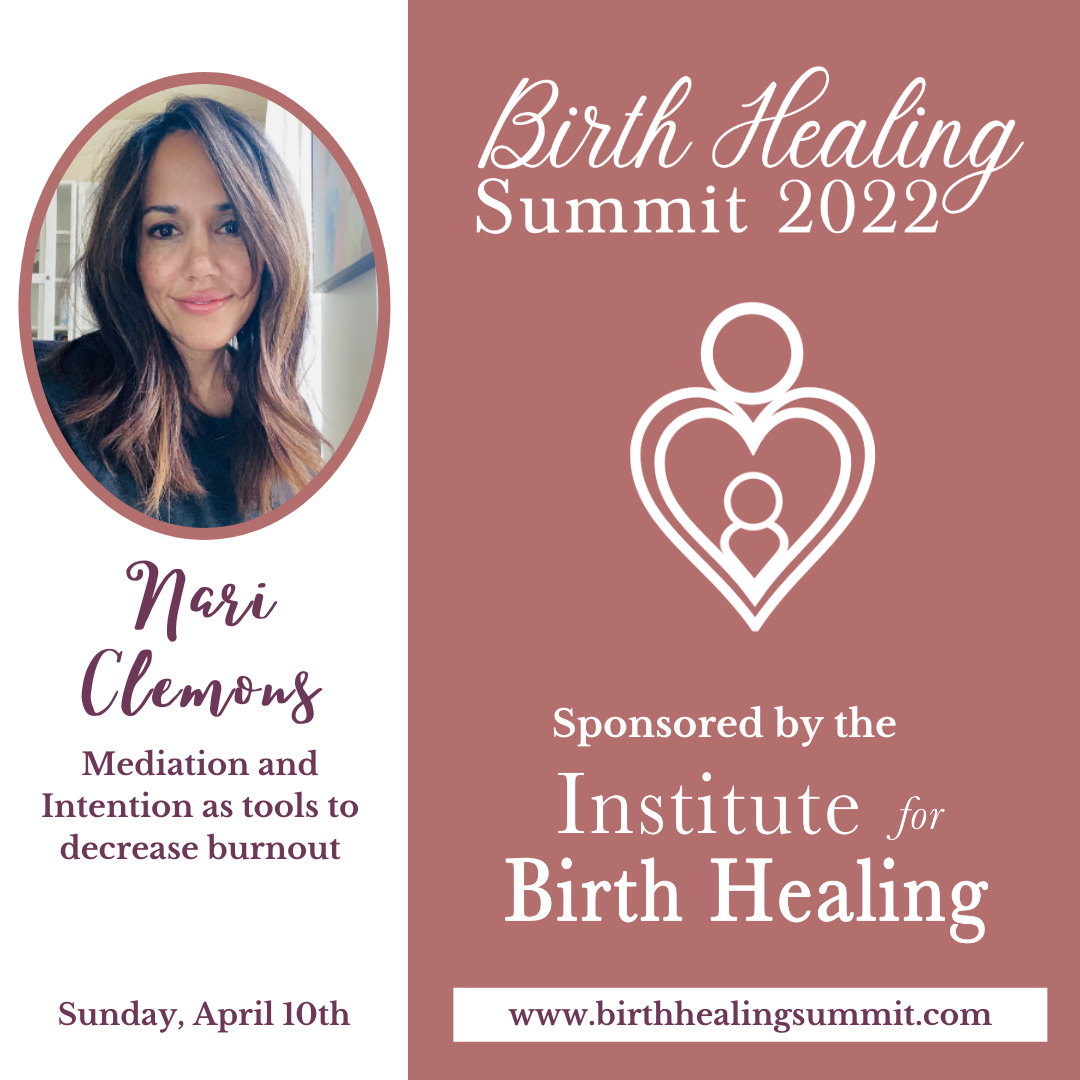
The Birth Healing Summit is a virtual summit that runs from April 4th through April 14th. Faculty member Nari Clemons will be speaking on Sunday, April 10th!
H&W is partnering again this year to bring the Birth Healing Summit virtually to you. Lectures throughout the summit present practical information, instruction, and tools that can be implemented in your practice right away. The summit is scheduled to run from April 4th to April 14th with 2 recordings going live each day with the intention to help practitioners to help moms heal body, mind, and spirit after birth! Also, twice during the summit, there will be a LIVE Facebook Q & A which is a great opportunity to speak to the experts and ask any questions you may have.
You can register for the summit now or get more information on the website here:
https://courses.instituteforbirthhealing.com/birth-healing-summit/ibh/77
As physical therapists and bodyworkers, the majority of training is focused on anatomy, physiology, and techniques to apply force to the body. While this is an effective way to treat the body, the summit is going to explore “out-of-the-box” solutions to achieve deeper healing. All 20 interviews will introduce you to a new approach to treating the common postpartum issues that women face.
These interviews are so packed with valuable information, instruction, and tools that you will want to listen to them over and over again. The All-Access Pass – Video or Video Plus, will allow you to review each at your own convenience or refer back to the information for a specific client case. It’s like having a reference library at your fingertips whenever you need it.
DAILY ACCESS: You receive 20 interviews with experts, plus their gifts for FREE!
Here is how it works:
- Starting April 4th, 2 speaker video-recorded interviews will be released each day.
- You will have 48hr to view, learn and enjoy the interviews.
- Sorry, no CEU’s available
VIDEO ALL-ACCESS PASS: You receive immediate access to all 20 interviews and the gifts.
Here is how it works:
- Starting March 21, you can purchase to gain full access to all the video-recorded interviews and gifts.
- You will have lifetime access to learn and enjoy the interviews.
- Sorry, no CEU’s available.
VIDEO PLUS ALL-ACCESS PASS: You receive immediate access to all 20 interviews and the gifts.
Here is how it works:
- Starting March 21, you can purchase to gain full access to all the video-recorded, audio, and transcripts plus the gifts.
- You will have lifetime access to learn and enjoy the interviews.
- Sorry, no CEU’s available.
Herman & Wallace's own Nari Clemons will be one of the 20 speakers talking about 'Mediation and Intention as Tools to Decrease Burnout' which is close to her heart! If you join Nari's lecture and enjoy the subject, she also co-instructs a course with Jennafer Vande Vegte for H&W to further deep dive into this topic called Boundaries, Self-Care, and Meditation which can be found on the H&W Online Courses page.
A few of the other lecturers and topics that you may be interested in:
- Lynn Schulte, PT - Pregnancy and Postpartum Impact on the Organs
- Rachel Shapiro, CNM - The Uterosacral LIgament - Sex and Postpartum Wellness
- Kathleen Kendall Tackett A New Paradigm for Depression in New Mothers
- Raylene Phillips, MD - Preventing and Minimizing Birth Trauma
- Rixa Freeze - Making Breech Birth Safe Again
Better support your client's pregnancy and labor and speed up their recovery by listening in. H&W hopes to see you at the Summit! Join the Summit Here: https://courses.instituteforbirthhealing.com/birth-healing-summit/ibh/77

This is a common question that faculty member, Mercedes Eustergerling, is asked. To paraphrase this question – why does H&W (a pelvic rehabilitation institute) offer a breastfeeding course – Breastfeeding Conditions? Well, if you consider that new parents who are breastfeeding have just experienced a birthing event then the answer is – it has plenty to do with pelvic rehabilitation.
Most pelvic therapists have exposure to patients who have given birth and are experiencing a range of postpartum pelvic issues including painful intercourse, prolapse, and incontinence. Have you considered how breastfeeding affects these issues? After giving birth the body’s levels of estrogen drop and the levels of prolactin rise. Prolactin is the hormone responsible for stimulating milk production and will remain elevated during breastfeeding. Thus, estrogen levels remain low during this time and can result in vaginal dryness, delayed menses, low libido, and painful sex.
Women or any person who has experienced childbirth, with pelvic organ prolapse (POP) are often told that the condition will improve after breastfeeding. While many do see improvement after weaning their child there is no correlation between breastfeeding slowing the healing of pelvic floor muscles or worsening POP long-term (1). POP has been linked with sleep quality (2). Which anyone with a newborn can tell you is in short supply. Not surprisingly, sleep is important for your body to recover from birthing, managing postpartum mood disorders, and of course, staying awake to take care of your baby. For breastfeeding parents, sleep deprivation is a way of life as they are waking up every 2-3 hours to feed their baby and establish a strong milk supply. It may be beneficial at this point for the new parent to work with a lactation consultant. These professionals can guide new parents through latching, feeding, milk supply issues, breast pump use, and can help reduce stress and promote optimal rest and recovery postpartum.
Mercedes pointed out in a past interview that “Anytime we talk about breastfeeding we are talking about two people working together, the mother and the baby, it's a team effort. As physiotherapists, we can help with issues or conditions that arise on the maternal (breast) side of things, and on the infant side of things. When it comes down to it, the physiotherapist's role is not about what or how much (nutrition) gets into the baby’s belly, but rather how it gets in (mechanics).” Fast milk flow can make the task of suckling more difficult for babies with an uncoordinated suck/swallow/breathe pattern. If the mechanics or timing is off, the infant will prioritize airway protection and may appear to go on and off the breast throughout the feed.
Another common concern for postpartum parents is urinary incontinence, aka bladder leaking. Breastfeeding does not make incontinence worse, but there is research showing that breastfeeding triggers intense thirst in relation to plasma vasopressin, oxytocin, and osmoregulation (3). The connection is that drinking more water due to this thirst will increase your urge frequency and possible urine leakage.
Mercedes Eustergerling’s remote course Breastfeeding Conditions provides a thorough introduction to the physiology of the lactating breast, dysfunction, treatment interventions, and further discusses the pelvic rehab therapist’s role in breastfeeding and pumping support. As a rehab therapist, it is within the scope of practice to assess and treat breast inflammation and pain such as mastitis, blocked ducts, milk blebs, and cracked nipples. However, Mercedes also discusses when it is important to refer to other health care professionals.
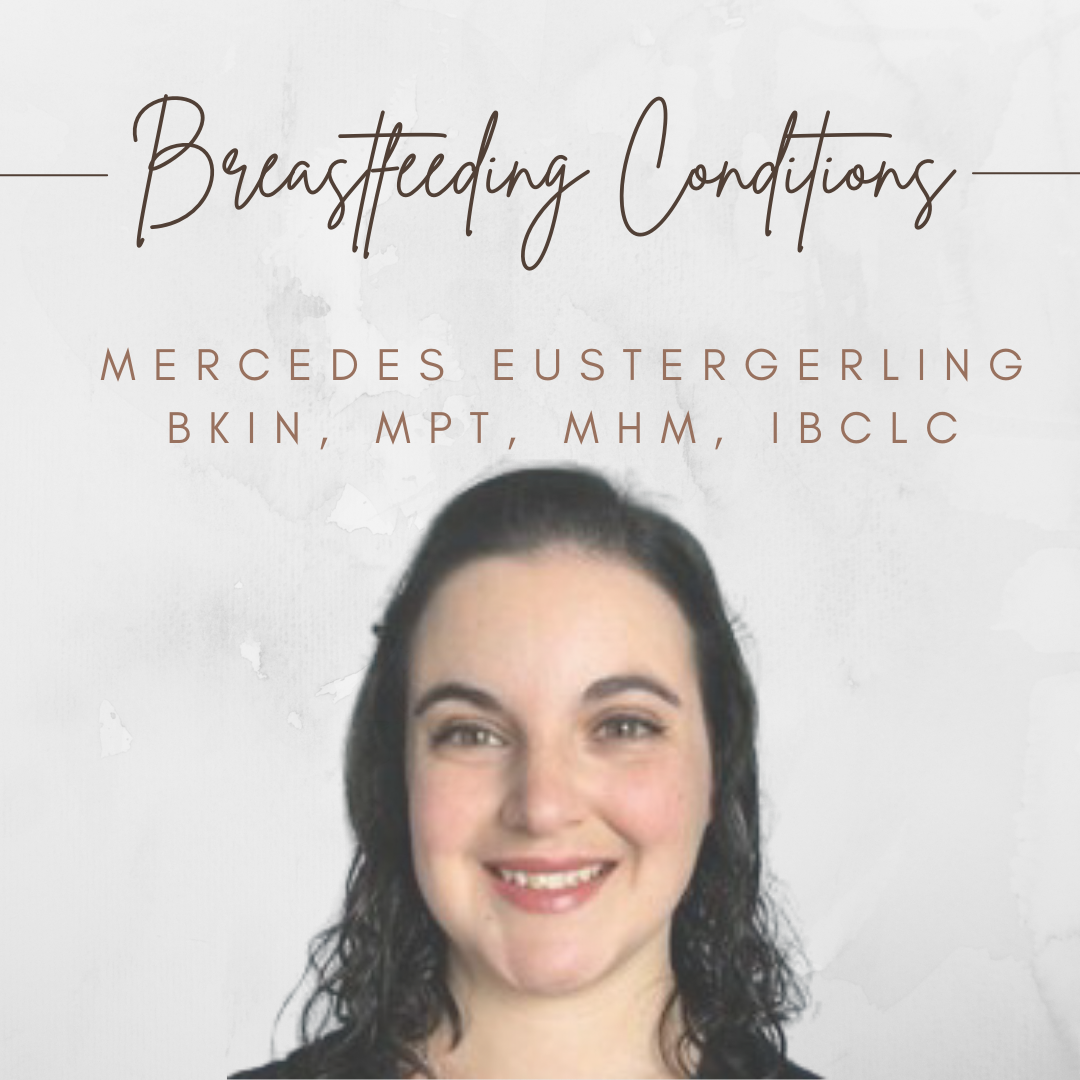
Mercedes sat down with The Pelvic Rehab Report this week to talk about herself and her course.
Tell me a little bit about yourself and your practice.
I studied physical therapy to work with athletes and quickly developed an interest in chronic pain and complex health conditions. As I worked with these populations, I found that I wasn’t able to fully evaluate or treat them without a better understanding of pelvic health, so I took continuing education in pelvic health, and my skills as a physical therapist expanded tremendously.
Then I had a baby and encountered every infant feeding hurdle you can imagine. At our lactation appointments, I was fascinated by it all and realized that I could not provide whole-person physical therapy without understanding the physiology and conditions that are unique to lactating individuals.
In my practice today, I work as a part of a team that provides physical therapy and mental health occupational therapy for chronic pain, trauma, pelvic health, breast health, and infant feeding. We teach courses and workshops, and we do research in chronic pain and breast health.
How do you incorporate physical therapy principles when helping parents meet feeding goals?
At its core, physical therapy is about optimizing a person’s function. What makes physical therapy for infant feeding interesting is that we consider the functional goals and limitations for two individuals: the parent and the infant. In this course, the focus is on the parent’s function. Physical therapists already have the knowledge and skills necessary to manage inflammation, pain, and skin integrity. We apply a biopsychosocial, trauma-informed approach to concerns such as musculoskeletal overuse injuries, ergonomics, breast inflammation, and nipple wounds. Physical therapists are especially helpful for individuals with existing musculoskeletal, neurological, or cardiorespiratory conditions because of our extensive knowledge in these areas
What made you want to create this course?
I was asked to create a course for physical therapy in lactation and infant feeding after attending a women’s health course and discussing it with a colleague. At the time, I was in a solo practice and seeing patients with breast inflammation. They would go onto their parenting groups on Facebook and advise other parents to seek physical therapy for blocked ducts, mastitis, etc. The problem was that I was the only physical therapist in the country providing this service! As physical therapists received requests from their patients to help with these conditions, they started looking for continuing education opportunities.
A lot of our information on lactation comes from oral history that is passed down from one generation to the next. This is a beautiful thing from a cultural perspective. However, one of my goals in creating this course was to provide evidence-based information for health professionals so we could deliver the best care possible. For lactating individuals, there is no shortage of advice or opinions on every topic. I dove into the literature to compile information for a research-informed course and I continue to review the literature and update the course often.
If you could get a message out to practitioners about bodyfeeding and lactation what would it be?
This is a population that is underserved and needs care. In all studies done on the subject, pain is consistently one of the top three reasons for stopping chest/breastfeeding. Physical therapists have unique training and backgrounds that make us a valuable resource for these individuals. It is not difficult to apply our existing knowledge and skills once we gain some understanding of the anatomy, physiology, and sociocultural context of lactation.
What lesson have you learned that has stayed with you and impacted your practice?
When I met one of my first patients with mastitis, she was curled up on the exam table and the lights in the room were off. Her partner answered all my questions because she felt too ill to talk. Two days later, she came to her appointment with makeup on and smiling. She said she was feeling like herself again. I have a great deal of sympathy for anyone experiencing the acute symptoms of breast inflammation and I take care to consider their psychosocial impacts instead of treating it as a purely physical condition.
What do you find is the most useful resource for your practice?
There is a phenomenal community of lactation professionals in my city of Calgary, Canada. We are fortunate to have physicians who specialize in lactation and infant feeding, and they value collaborative care. I shadowed with them in their clinics for 500+ hours and gained a great deal of skills and knowledge from a medical perspective. Now, we continue to collaborate and I am able to refer patients for an evaluation or to check any possible red flags. I encourage all physical therapists entering this practice area to connect with lactation professionals and physicians in their area.
What books or articles have impacted you as a clinician?
The works of Donna Geddes and Maya Bolman have changed my understanding of breast anatomy, physiology, and inflammation. Similarly, the World Health Organization’s publication on mastitis was a great introduction to the pathophysiology and available literature.
A book that I have read several times and recommend to those who are interested in the pediatric side of things is Supporting Sucking Skills in Breastfeeding Infants by Catherine Watson Genna. And in 2021, a book on breastfeeding and public health was published with a chapter on the role of physical therapists, which I wrote. That book is called Lactation: A Foundational Strategy for Health Promotion by Suzanne Hetzel Campbell. The chapter on physical therapy for lactation and infant feeding can be helpful to understand our role and communicate how this practice area fits into our scope of practice.
Breastfeeding Conditions is a two-day remote course and is scheduled for:
This course may be of interest to you if you have taken any other the other H&W peripartum courses including:
- · Pregnancy Rehabilitation
- · Postpartum Rehabilitation
- · Pregnant and Postpartum Rehabilitation Special Topics
- · Doula Services and Pelvic Rehab Therapy
- · Medical Perspective in Peripartum Care
- · Perinatal Mental Health: The Role of Pelvic Rehab Therapist
- · Pregnancy and Postpartum Considerations for High-Intensity Athletics
References:
- Iris S, Yael B, Zehava Y, et al. The impact of breastfeeding on pelvic floor recovery from pregnancy and labor [published online ahead of print, 2020 May 19]. Eur J Obstet Gynecol Reprod Biol. 2020;251:98-105. doi:10.1016/j.ejogrb.2020.04.017
- Ghetti C, Lee M, Oliphant S, Okun M, Lowder JL. Sleep quality in women seeking care for pelvic organ prolapse. Maturitas. 2015;80(2):155-161. doi:10.1016/j.maturitas.2014.10.015
- James RJ, Irons DW, Holmes C, Charlton AL, Drewett RF, Baylis PH. Thirst induced by a suckling episode during breastfeeding and relation with plasma vasopressin, oxytocin, and osmoregulation. Clin Endocrinol (Oxf). 1995;43(3):277-282. doi:10.1111/j.1365-2265.1995.tb02032.x
In today's interview, Holly Tanner sits down with Stacey Futterman Tauriello, PT, MPT, WCS, BCB-PMD to discuss her approach to pelvic rehabilitation. Stacey received her Master’s Degree in Physical Therapy from Nova Southeastern University in South Florida in 1996. After graduation, she relocated to Chicago where she began specializing in women’s health issues including the treatment of incontinence, pelvic pain, and prenatal/postpartum musculoskeletal issues. She returned to the east coast in 2003 and is now the owner of 5 Point Physical Therapy, a specialty physical therapy clinic for male and female pelvic dysfunction in New York City.
Stacey will be instructing Pelvic Floor Level 2A on December 11-12, 2021 and Pelvic Floor Level 1 on January 22-23, 2022.
What clinical pearls do you have for practitioners working with labral tears?
Return to sport has to be discussed on day one. Figuring out what that path is. It's ok that it is slow, but the patient needs to understand that they are going to progress in a fashion to get them stronger and more stable.
You always have to have stability before you have mobility.
You need that background knowledge of getting them stronger without flaring up their pelvic floor symptoms. You have to release and restore, release and restore, release and restore. You got to understand the "why" component. Why are they having so much pain? What can you do to strengthen without flaring? I think that is huge.
What excites you about exercise approaches?
The first thing that got me excited was that I saw that I was doing a lot of things right. One of the biggest takeaways...was the neuromuscular reeducation portion of the exercise...That really task-specific brain reeducation with every exercise...I often think of neuro as Parkinson's. So a Parkinson's patient if you want them to walk and lift their leg (because they're shuffling), you would put something in front of them and say step over it.
Your daughter is 3 and a half years old now. How has going through pregnancy, birth, and postpartum changed your approach with pregnant and postpartum patients?
I did an interview in 2019 with the Today Show on postpartum motherhood and the pelvic floor, both from the patient and the practitioner's standpoint.
It's changed my perspective completely. From the process of getting pregnant, I was in my 40s, so I was an older mom, to being pregnant, having some issues during pregnancy. And then the actual delivery was...it's not great being a pelvic floor physical therapist trying to push a baby out of your vagina...but you have to go through it. Then you realize too that your postpartum experience is all about healing. As much as it's easy for somebody that's 21 to give birth and bounce back. A lot of the women who are having babies right now are in their 30s and 40s. Their bodies don't respond the same, especially not during covid.
It's a game-changer right now, things are different. Yeah, I had incontinence after I gave birth, I still struggle. My body, within covid from not exercising and going to the gym and everything still takes a toll. I feel like it made me more empathetic to some of my pregnant patients.
Is there a clinical pearl or fun phrase that comes to mind that you use?
One of the big phrases that I use comes from Pam Downey, and it is "healthy tissue doesn't hurt."




